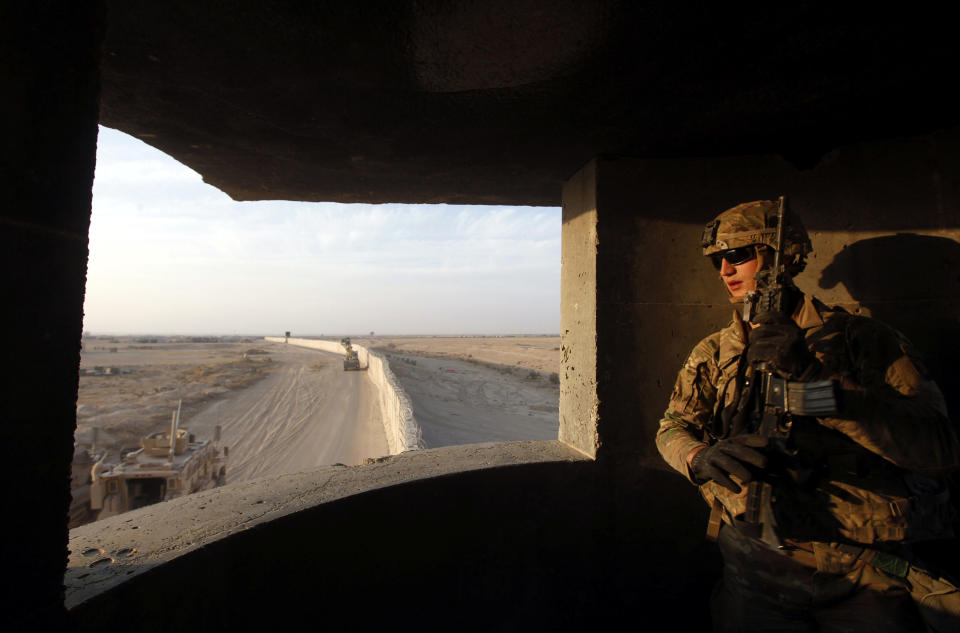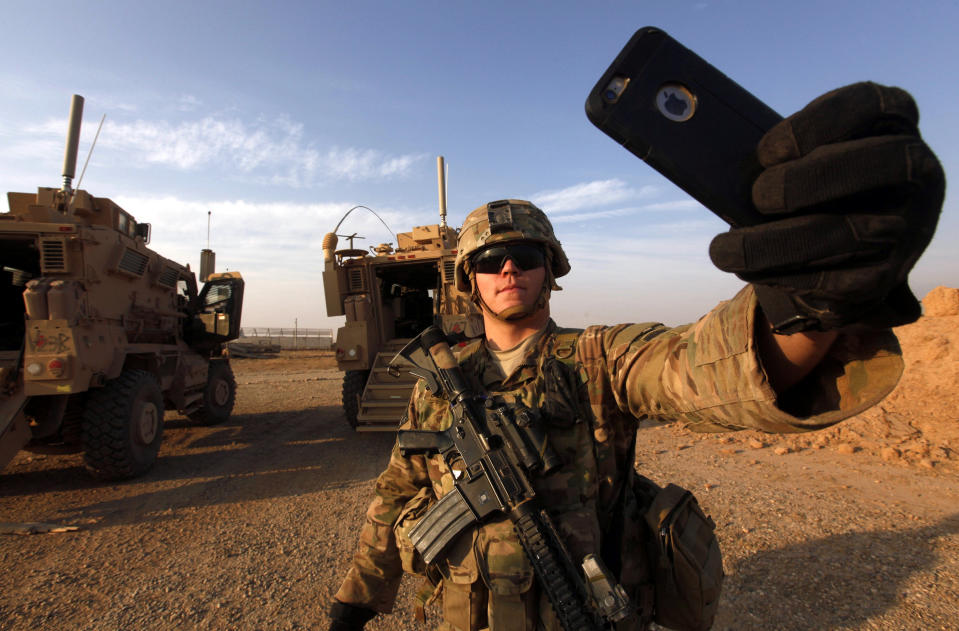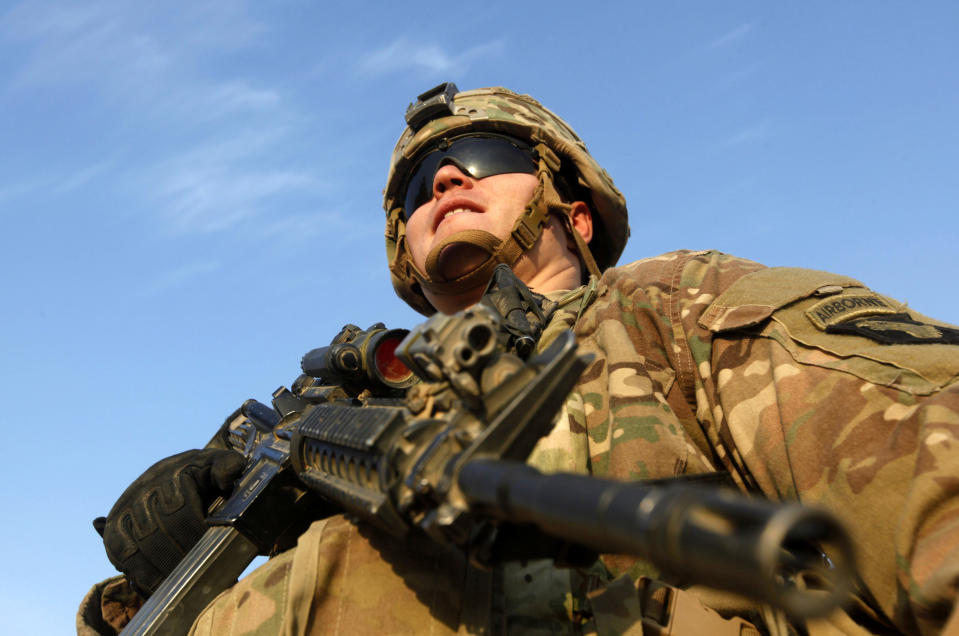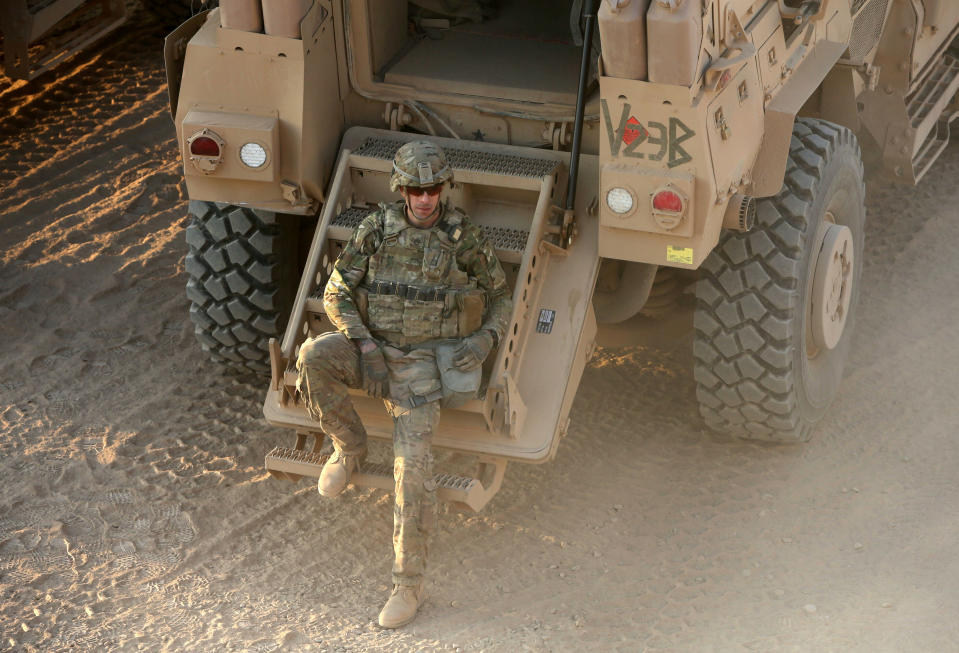U.S. 'rocket city' hits Islamic State targets in Mosul
By Babak Dehghanpisheh
QAYYARA, Iraq (Reuters) - When Islamic State fighters were pushed out of the Qayyara airbase in July, they tried to demolish anything left behind.
The airstrip was dug up and booby trapped, and concrete barriers were knocked down along with a large water tower.
"Daesh did everything they could to make the place unusable," said Maj. Chris Parker, a coalition spokesman, using an Arabic acronym for Islamic State.
Now the base, referred to as Q-West by American forces, has become the main staging ground for some 1,000 troops from the U.S.-led coalition along with thousands of soldiers from the Iraqi army and federal police as they try to advance on Mosul.
The U.S. army, air force and marines all have troops on the base, about 60 kilometers (37 miles) south of Mosul, and there is a joint operations room where American and Iraqi commanders share intelligence and plan out logistical support.
Repairs have been ongoing since U.S. troops arrived in late August: the airstrip has been demined and the first U.S. C-130 transport plane flew into the base in the past couple of days.
Even though Islamic State is gone, the threat remains. Mortars have been fired into the base in the two months that U.S. troops have been there.
And just last week, toxic sulfur fumes – from a nearby plant that U.S. military and ordinary Iraqis say was torched by Islamic State – spread to the base.
"It’s a concern for us," Parker said. "We’re taking measures to mitigate the risk to soldiers. When the sulfur count gets to a certain degree we’ll don protective gear to make sure they’re as safe as possible."
STRIKING FROM AFAR
The stated U.S. mission is not to head out with Iraqi soldiers to fight on the frontlines. Instead, they hit targets provided by the Iraqi army or through coalition surveillance with air strikes, GPS-aided rockets and conventional artillery.
The GPS-aided rockets, known by the acronym HMARS (high mobility artillery rocket system), have a range of up to 70 km and are positioned at a spot on the base the soldiers have dubbed "rocket city".
"We’ve been hitting targets inside Mosul since we’ve been here," said one American soldier. "Nothing else in theater can shoot as far as we can.”
Since the operation to recapture Mosul from Islamic State began last week, the U.S. military has dropped 1,700 munitions on targets in the battlefield.
Islamic State has put up a tough fight around Qayyara but the Iraqi army and federal police have managed to wrest 14 villages from their control.
As they advance, the Hashid Ashaeri, or Tribal Mobilisation, a force composed of tribal fighters from the mainly Sunni Muslim area, move in to hold ground that has been taken back from Islamic State.
Concerns have been raised about the involvement in the Mosul operation of another force, the Hashid Shaabi, or Popular Mobilisation coalition of Shi'ite militias.
There are fears that the involvement of Shi'ite fighters could ramp up sectarian tension with Sunni civilians in the area, or that they could carry out revenge attacks.
"Anyone working in the Mosul operation needs to be working with the government of Iraq," said Parker. He said that other forces not working directly with the government could "complicate or destabilize the situation".
General Firas Bashar, an Iraqi army spokesman, said that no Haashid Shaabi forces are currently based at Qayyara.
Despite some success by the Iraqi army, no one has written off Islamic State yet. "As Iraqi forces move closer to Mosul, we see that Daesh resistance is getting stronger," said Parker.
(Editing by Dominic Evans)




